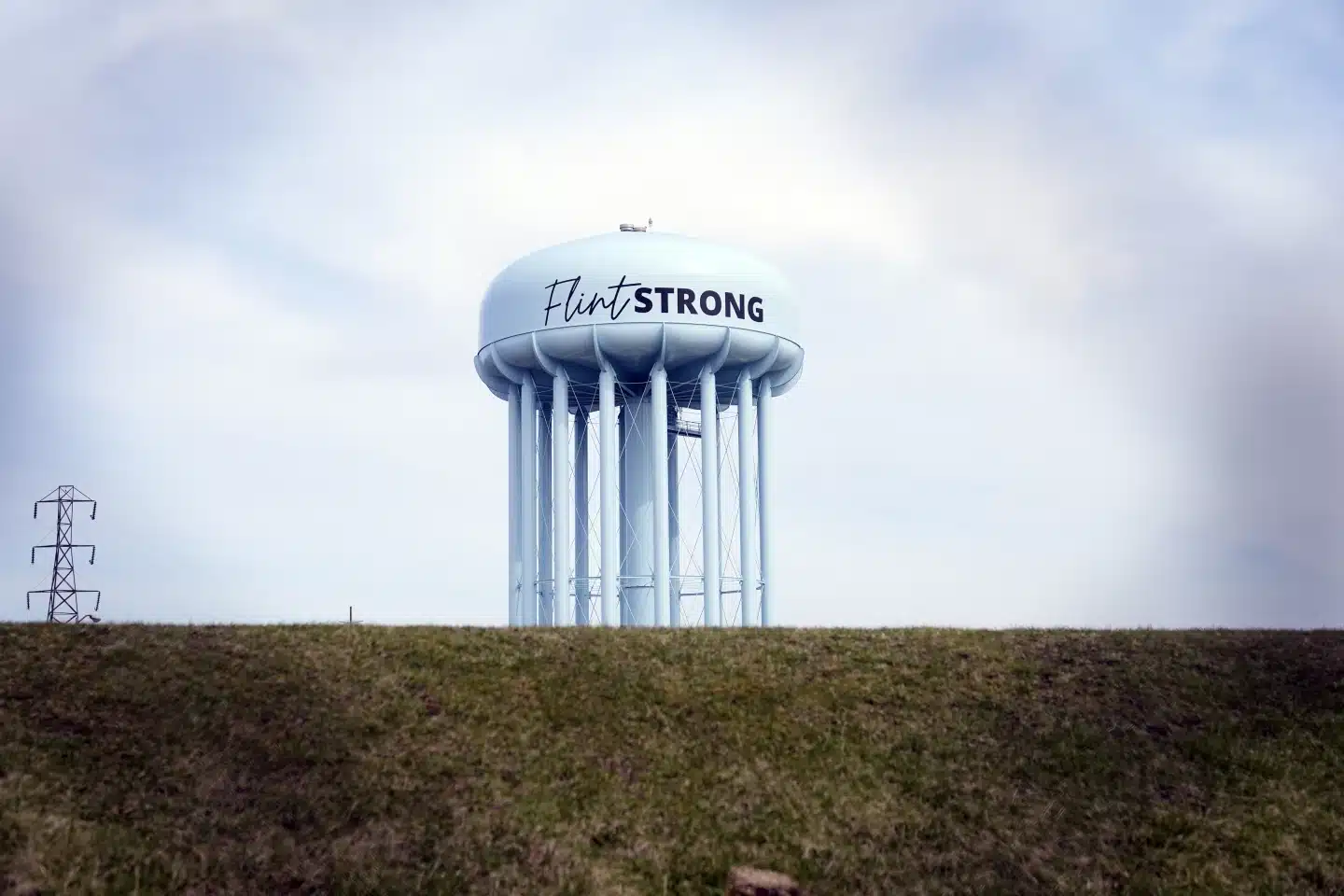News
Children Of Flint Water Crisis Make Change As Young Environmental And Health Activists

Flint, Michigan – Their childhood memories remain vivid: cautions against drinking or cooking with tap water, waiting in lengthy lines for cases of water, and washing in buckets filled with warm, bottled water. Some people have stomachaches, skin rashes, and hair loss.
On April 25, 2014, ten years ago, city and state environmental officials in Flint raised champagne glasses as the mayor depressed a button to stop the flow of Lake Huron water that Detroit had been supplying for almost 50 years. That triggered a public health disaster including lead and bacteria from which the city has yet to recover.
However, dozens of water crisis survivors, now teenagers and young adults, have used their pain to advocate for change. They provide feedback on public health programs, participate in social problem campaigns, distribute filters, and offer free water testing to households.
AP – VOR News Image
Children Of Flint Water Crisis Make Change As Young Environmental And Health Activists
They realize Flint is still struggling. The population has decreased by approximately 20,000 over the last decade, leaving abandoned houses as targets for arsonists. Almost 70% of children live in poverty, and many struggle in school.
Despite the fact that the water has been confirmed safe to drink, there is widespread skepticism, and hundreds of lead water pipes remain in place since householders were given the option of not replacing them.
However, the young activists say they want to make a difference and change the way outsiders perceive their community. They seek to defy expectations.
“One of the biggest issues about growing up in Flint is that people had already decided and predetermined who we were,” said Cruz Duhart, a 22-year-old Flint Public Health Youth Academy member.
“They had ideas about our IQ, about behavioral things, but they never really stopped to speak to us and how we thought about it and the type of traumas that we were going through.”
AP – VOR News Image
Children Of Flint Water Crisis Make Change As Young Environmental And Health Activists
Sima Gutierrez, 16, has always found it easier to express herself through painting. Drawings, paintings, and wire sculptures adorn her family’s neat cottage.
The self-described “very shy” teen, who rarely spoke up for fear of being ignored, now collects water samples from people’s homes and transports them to the Flint Community Water Lab, where over 60 high school and college interns have provided free testing to thousands of residents since 2020.
As a member of the Flint Public Health Youth Academy, she assisted in the planning of public awareness campaigns on issues such as gun violence and how racism impacts public health.
“I wanted to be surrounded by people who weren’t going to cover up the whole fact that people are still having problems,” Sima remarked. “I was able to … share my life (with) anybody else who’s going through what I’m going through.”
She complained a decade ago that drinking water made her stomach pain. Her mother insisted that it would help Sima’s body flush out the medication she was taking for an autoimmune disease, which was causing her hair to come out in sections and leaving her skin with light blotches.
Residents began reporting skin rashes and complaints about discolored, odorous, and foul-tasting water shortly after the city began drawing from the Flint River to save money before it could connect to a new Lake Huron pipeline. However, they were told that everything was alright.
Sima claimed she was unaware of the issues until one of her elementary school classmates, Mari Copeny, a 7-year-old beauty pageant winner known as Little Miss Flint, started protesting. Mari became the crisis’s face, and she continues to raise awareness of environmental justice concerns among her almost 200,000 Instagram followers, as well as funds for water filters that she distributes in communities around the United States.
“I want to keep on using my voice to spread awareness about the Flint water crisis because it’s not just Flint that has a water crisis,” Mari went on to say. “America has a water crisis.”
Almost a year and a half after Flint made the transition, homeowners dissatisfied with the water quality contacted an expert, who discovered excessive lead levels caused by the city’s inability to add chemicals that prevent pipe corrosion. State officials had stated that these were superfluous. Around the same time, a pediatrician observed that levels in children’s blood had doubled since the changeover.
Outbreaks of Legionnaire’s disease, which resulted in a dozen deaths, were eventually traced to the city’s water supply.
Flint reconnected to its previous water line shortly thereafter, but the pipes continued to leak lead. The state gave households filters and bottled water.
Lead is a strong neurotoxin that can harm children’s brains and neurological systems, impairing learning, behavior, hearing, and speaking. There is no safe level of exposure throughout childhood, and issues can appear years later.
Dionna Brown, who was 14 when the water crisis started, grew interested in lobbying after taking an environmental inequality class at Howard University. She’s now building her life around it, pursuing a master’s degree in sociology at Wayne State University with the goal of becoming an environmental justice lawyer.
AP – VOR News Image
Children Of Flint Water Crisis Make Change As Young Environmental And Health Activists
She is also the national director of Young, Gifted & Green’s youth environmental justice initiative, which was previously known as Black Millennials for Flint and was formed by Washington advocates to help Flint recover from the disaster.
Every year, Brown hosts a two-week summer environmental justice camp in Flint to educate youth about policy, climate justice, sustainability, and housing inequality. She also works with children in Baltimore and Memphis.
She claimed that the Flint water crisis strengthened the children’s resilience.
“I tell people all the time: I’m a child of the Flint water crisis,” Brown added. “I love my city. And we made it clear to the world that you couldn’t just poison a city and expect people to forget about it.”
SOURCE – (AP)































